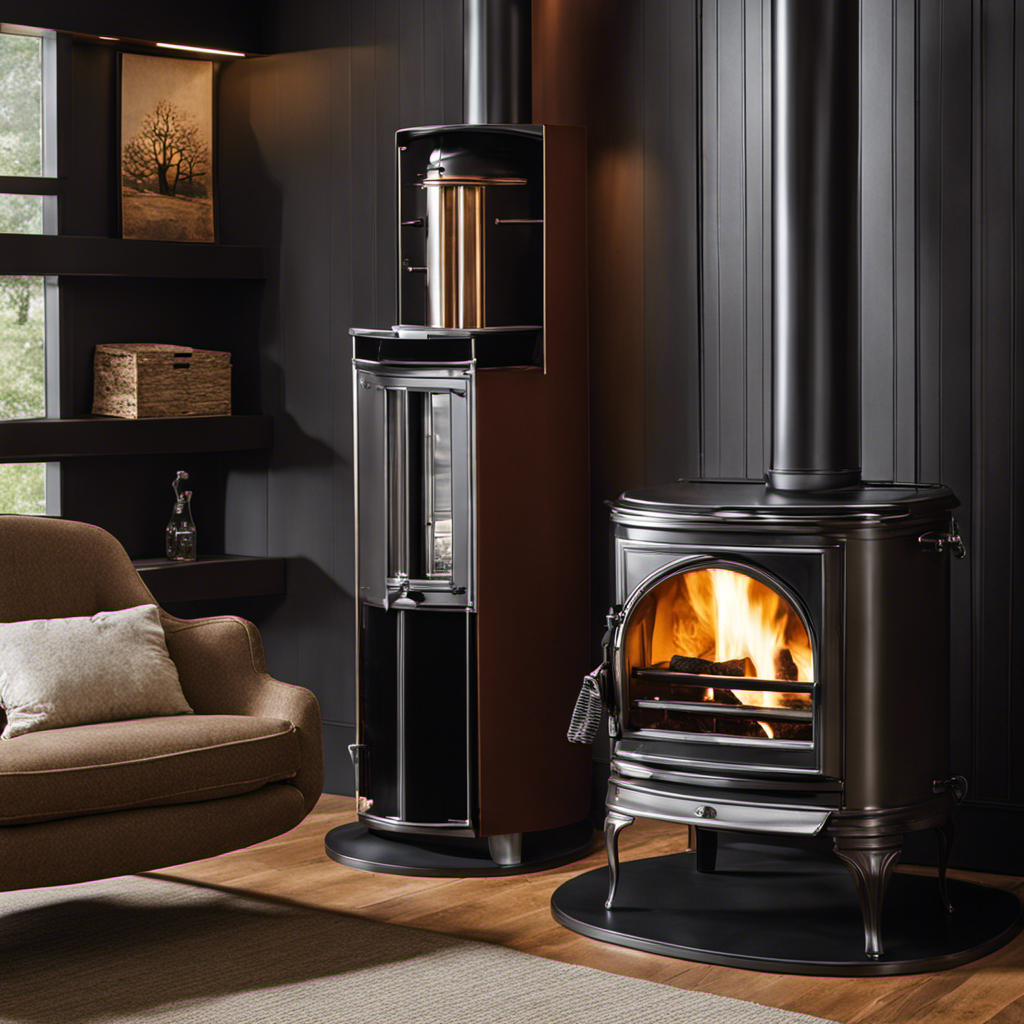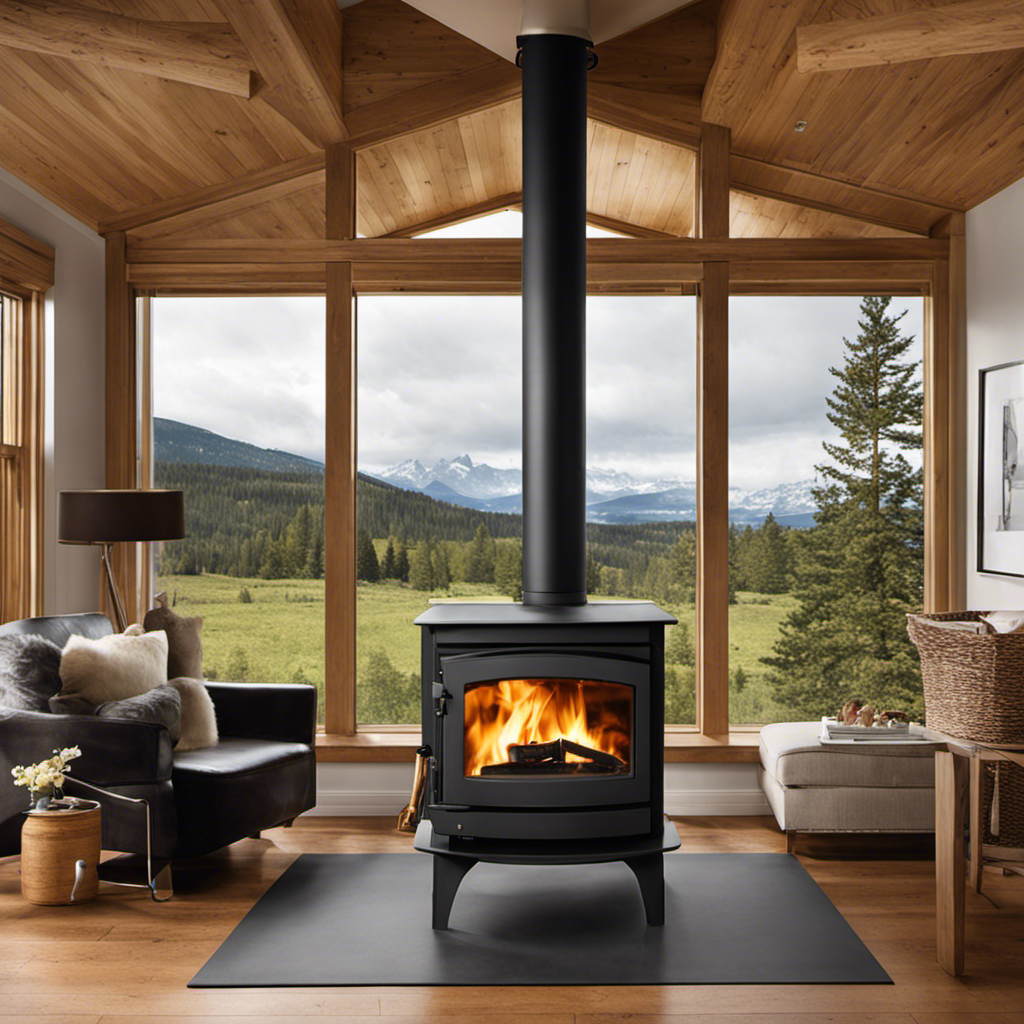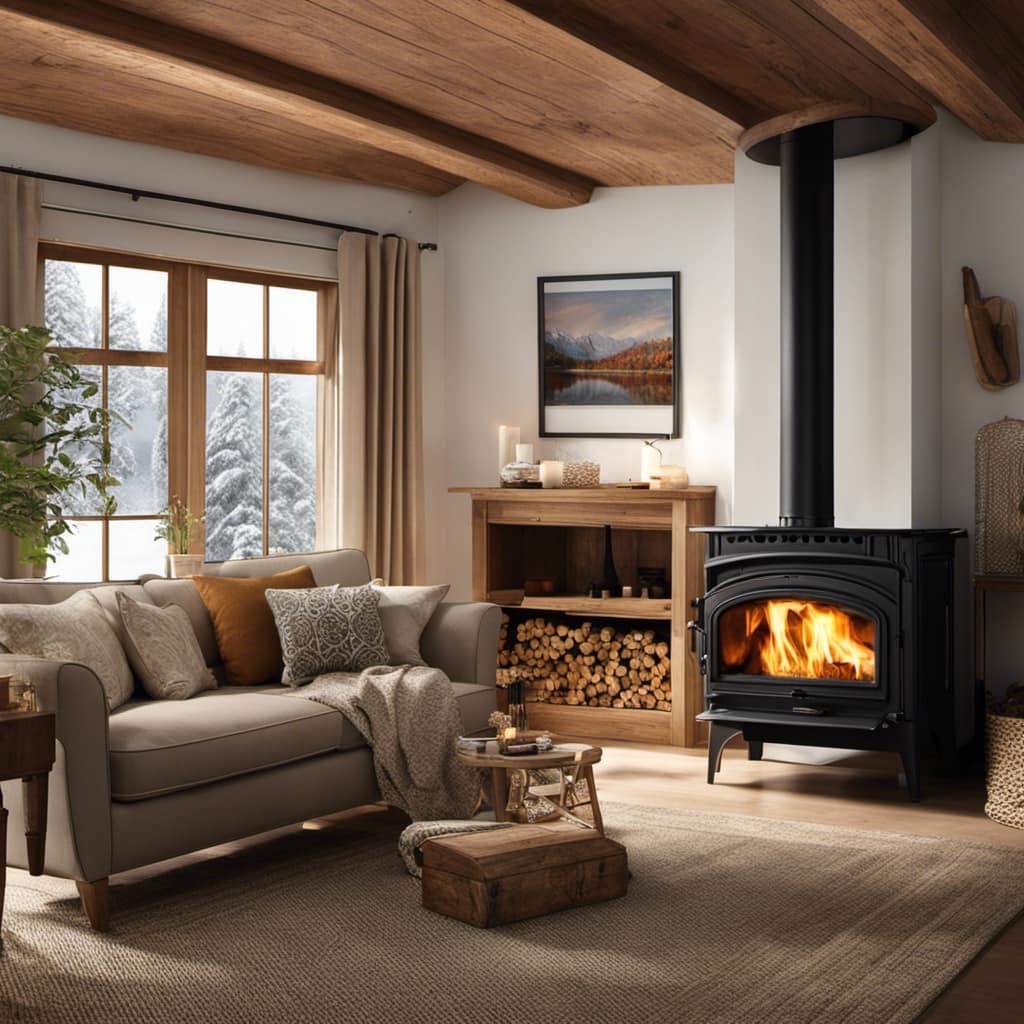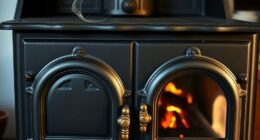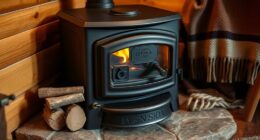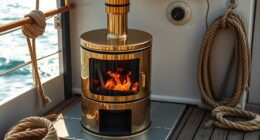As someone who truly values wood stoves, I have developed a skill for expertly installing stove pipes through walls. It’s like threading a needle, striking the right balance between functionality and visual appeal.
In this guide, I’ll share my tried-and-true methods for navigating this task with ease. From selecting the right materials to sealing every nook and cranny, I’ll walk you through each step, ensuring your wood stove pipe installation is a success.
Let’s get started on this satisfying and rewarding journey!
Key Takeaways
- Assess the wall material and check for signs of damage before installing the wood stove pipe.
- Choose the appropriate type and diameter of pipe based on needs and building codes.
- Cut the hole in the wall with precision and ensure there are no leaks or inefficiencies.
- Install the stove pipe through the wall using a wall thimble, sealing with high-temperature silicone, and considering insulation options for energy efficiency.
Required Tools and Materials
I need to make sure I’ve all the required tools and materials before starting to run the wood stove pipe through the wall. Safety precautions are of utmost importance when dealing with wood stove pipe installations.
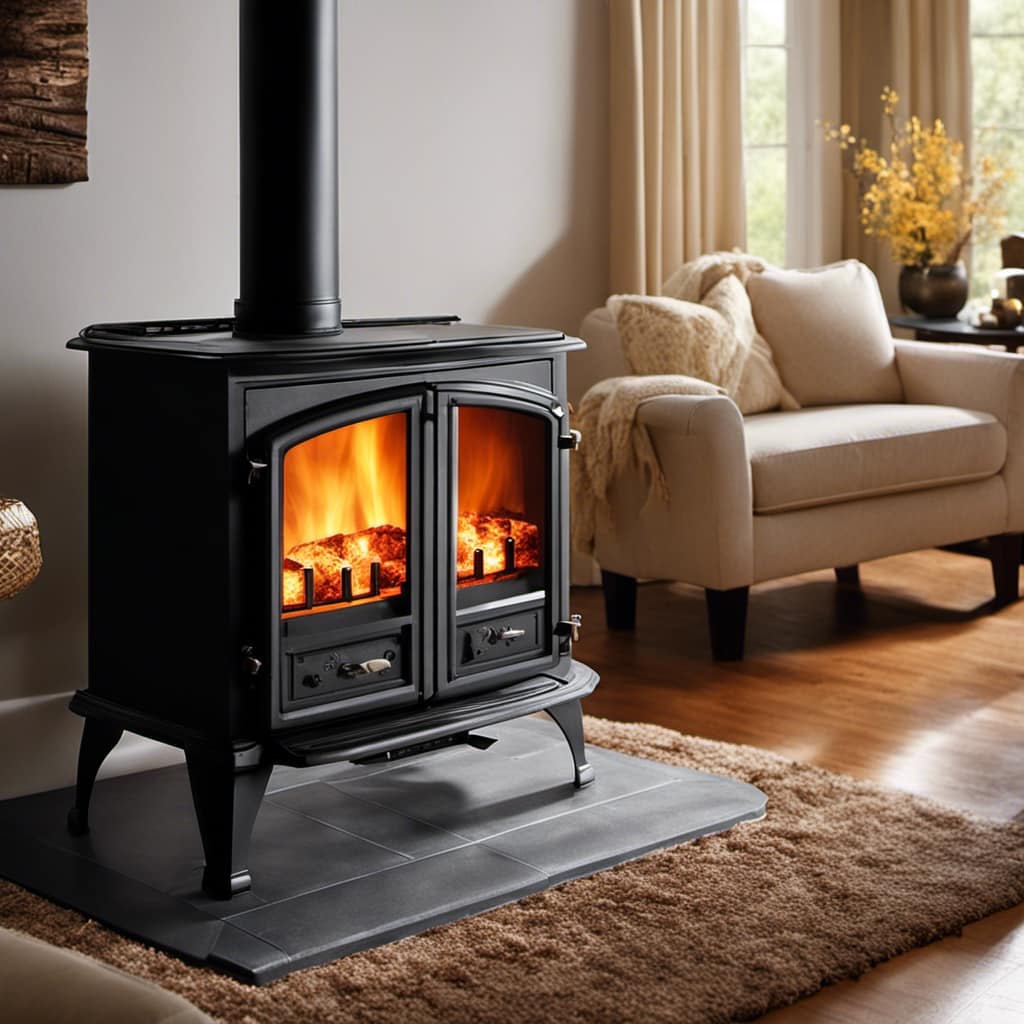
To begin, I gather a tape measure, level, pencil, reciprocating saw, and a drill with the appropriate drill bits. Additionally, I need a chimney pipe kit, chimney pipe sections, wall thimble, and a chimney cap. With these tools and materials in hand, I’m ready to proceed with the installation.
First, I measure and mark the wall where the pipe will pass through. This ensures precision and accuracy during the installation process. Once I’ve all the necessary tools and have properly measured and marked the wall, I can move on to assessing the wall for installation.
Assessing the Wall for Installation
After properly measuring and marking the wall, it’s important to assess if it can support the wood stove pipe installation. Evaluating the wall structure is crucial to ensure the safety and stability of the installation.
Start by examining the material of the wall, whether it’s made of brick, concrete, or wood. Next, check for any signs of damage, such as cracks or weakening.
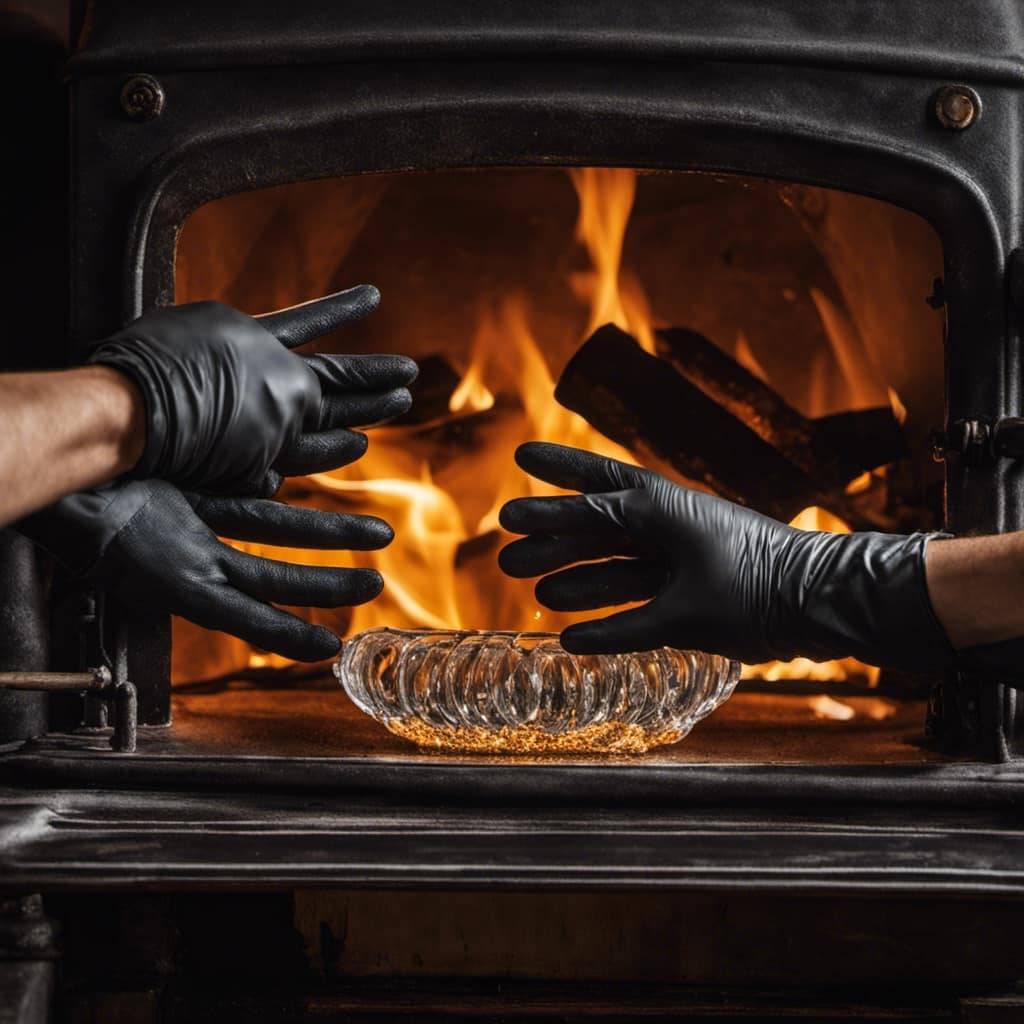
It’s essential to measure the clearance requirements for the wood stove pipe as well. This includes determining the distance between the pipe and any combustible materials, such as walls or furniture. Remember to follow the manufacturer’s instructions for clearance requirements to prevent any potential fire hazards.
Choosing the Right Pipe and Venting System
To ensure proper ventilation, it’s important to choose the right pipe and venting system for your wood stove installation. Here are some key factors to consider when selecting your venting options:
- Type of pipe: Choose between single-wall or double-wall pipe, depending on your specific needs and local building codes.
- Material: Select a pipe made from durable and heat-resistant materials such as stainless steel or black-painted steel.
- Diameter: Determine the appropriate pipe diameter based on the size and output of your wood stove.
- Clearances: Make sure to maintain proper clearances between the pipe and any combustible materials such as walls or ceilings.
- Chimney height: Consider the height of your chimney to ensure proper draft and efficient operation of your wood stove.
Proper installation of the right pipe and venting system is crucial for the safe and effective operation of your wood stove. It’s recommended to consult with a professional and follow the manufacturer’s guidelines for a successful installation.
Cutting the Hole and Preparing the Wall
Before cutting the hole, I’ll measure the diameter of the wood stove pipe and prepare the wall by clearing any obstructions. Proper cutting technique and wall preparation are crucial for a successful installation of a wood stove pipe through a wall. To ensure accuracy, I recommend using a hole saw or reciprocating saw for cutting the hole. It’s important to measure the diameter of the pipe accurately to prevent any leaks or inefficiencies. Once the hole is cut, the next step is to prepare the wall by clearing any obstructions such as insulation, electrical wires, or plumbing pipes. This can be done by carefully removing any obstacles and ensuring a clean and clear pathway for the pipe.
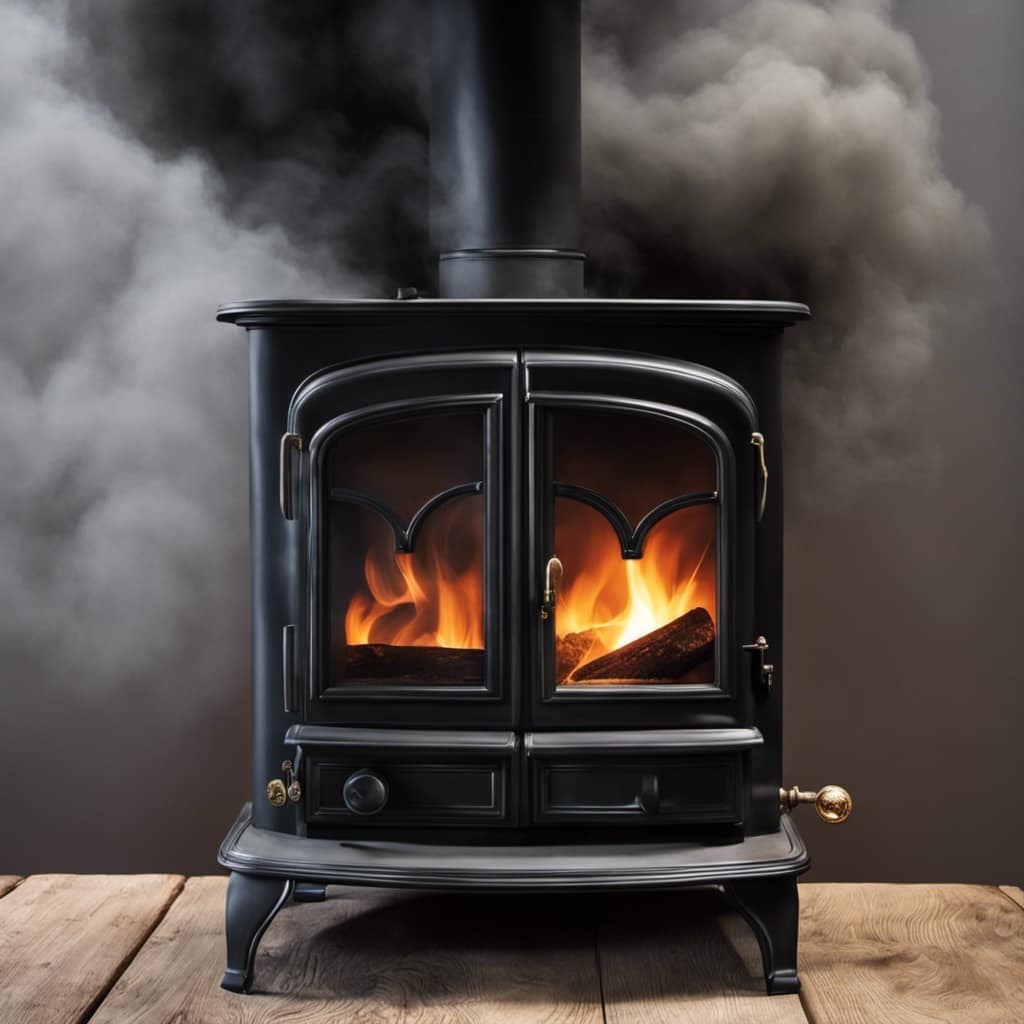
| Cutting Technique | Wall Preparation |
|---|---|
| Measure pipe diameter accurately | Clear obstructions such as insulation, wires, and pipes |
| Use hole saw or reciprocating saw | Ensure a clean and clear pathway for the pipe |
| Cut the hole with precision | Avoid damaging surrounding structures |
| Check for leaks or inefficiencies | Secure the pipe firmly in place |
Installing and Sealing the Stove Pipe Through the Wall
I will secure the stove pipe firmly in place through the wall to ensure a proper installation. To accomplish this, I’ll follow these steps:
- Use a wall thimble to create a safe and secure passage for the stove pipe.
- Inspect the wall for any obstructions or potential hazards that could affect the installation.
- Apply high-temperature silicone sealant around the opening to prevent any leaks or drafts.
- Utilize metal screws or clamps to firmly attach the stove pipe to the wall thimble.
- Consider using insulation options such as fiberglass or fire-resistant foam to improve energy efficiency and prevent heat loss.
Sealing techniques are crucial to prevent any unwanted air leakage, which can affect the efficiency of the wood stove. Additionally, insulation options help to maintain a comfortable temperature indoors and reduce energy consumption.
Frequently Asked Questions
Can I Use a Wood Stove Pipe Through a Wall Made of Concrete?
Yes, you can use a wood stove pipe through a wall made of concrete. It is important to follow proper installation guidelines to ensure safety. There are also alternatives to wood stove pipe available.
How Do I Know if My Wood Stove Pipe Needs to Be Double-Walled or Single-Walled?
I know if my wood stove pipe needs to be double-walled or single-walled by considering the installation process. Installing wood stove pipe requires understanding the different types available and their specific requirements.
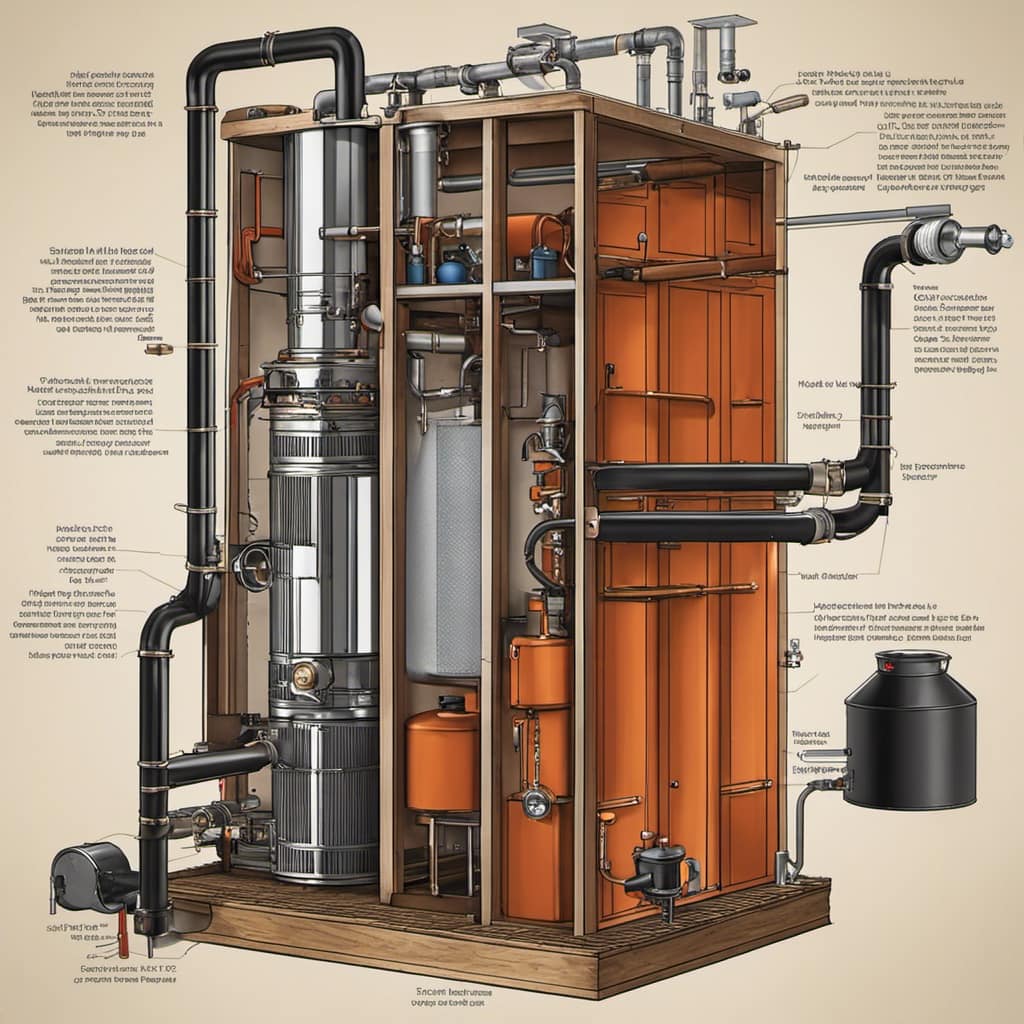
What Are the Safety Precautions I Need to Take When Running a Wood Stove Pipe Through a Wall?
To ensure safety when running a wood stove pipe through a wall, it is important to follow proper installation techniques. This includes using the correct materials, maintaining proper clearances, and ensuring a secure and well-insulated connection.
How Far Should the Wood Stove Pipe Extend Beyond the Wall on the Exterior Side?
When running a wood stove pipe through an exterior wall, it is important to consider the distance it should extend beyond the wall. Additionally, ensure the insulation used is compatible with the pipe for optimal safety.
Can I Install a Wood Stove Pipe Through a Wall That Has Insulation?
I’ve installed wood stove pipes in walls with insulation before. While it is possible, there are potential issues to consider. Proper insulation clearance and fire safety precautions must be taken.
Conclusion
Overall, running a wood stove pipe through a wall requires careful planning and execution. It’s crucial to assess the wall and choose the right materials for proper venting.
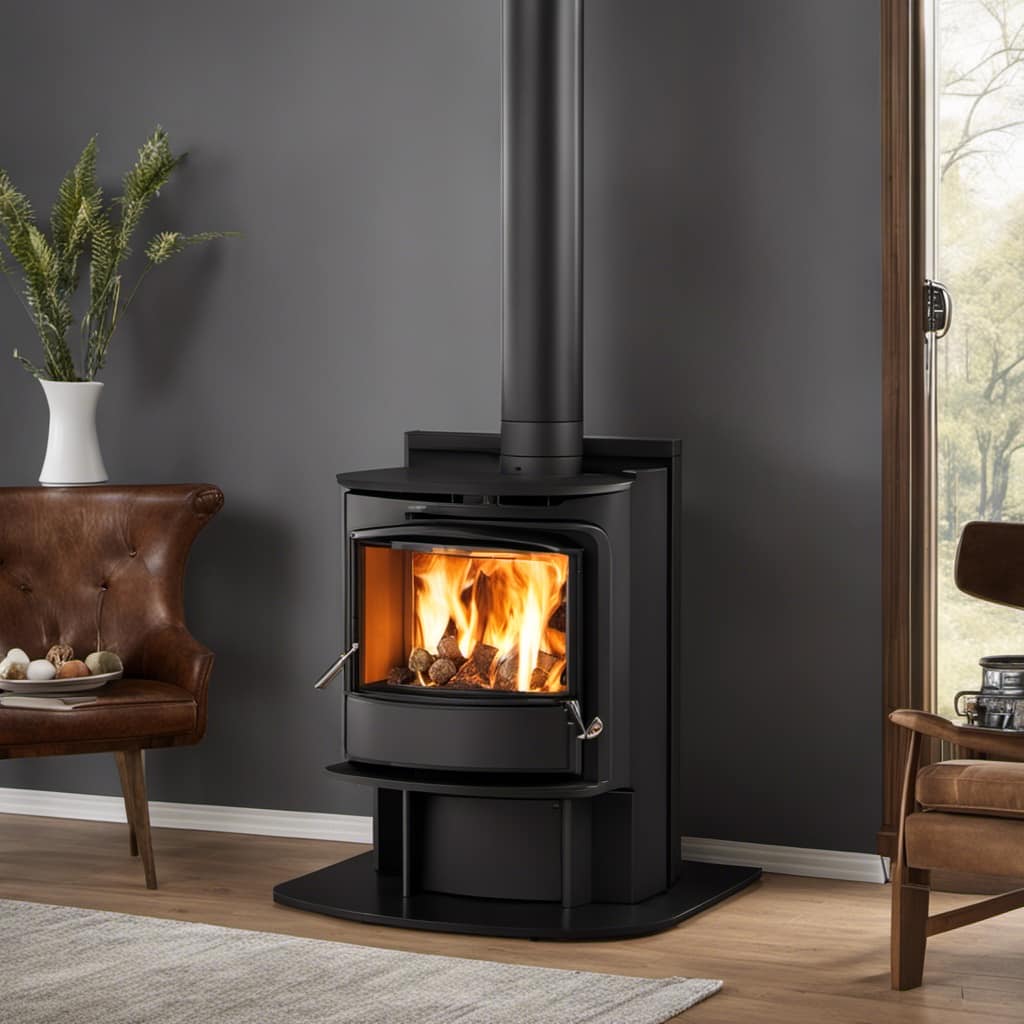
Cutting the hole and preparing the wall should be done with precision to ensure a secure installation.
Finally, sealing the stove pipe through the wall is essential to prevent any leaks or drafts.
Did you know that according to a study by the Environmental Protection Agency, wood stoves can reduce heating costs by up to 30%?
Growing up surrounded by the vast beauty of nature, Sierra was always drawn to the call of the wild. While others sought the comfort of the familiar, she ventured out, embracing the unpredictable and finding stories in the heartbeat of nature.
At the epicenter of every remarkable venture lies a dynamic team—a fusion of diverse talents, visions, and passions. The essence of Best Small Wood Stoves is crafted and refined by such a trio: Sierra, Logan, and Terra. Their collective expertise has transformed the platform into a leading authority on small wood stoves, radiating warmth and knowledge in equal measure.




